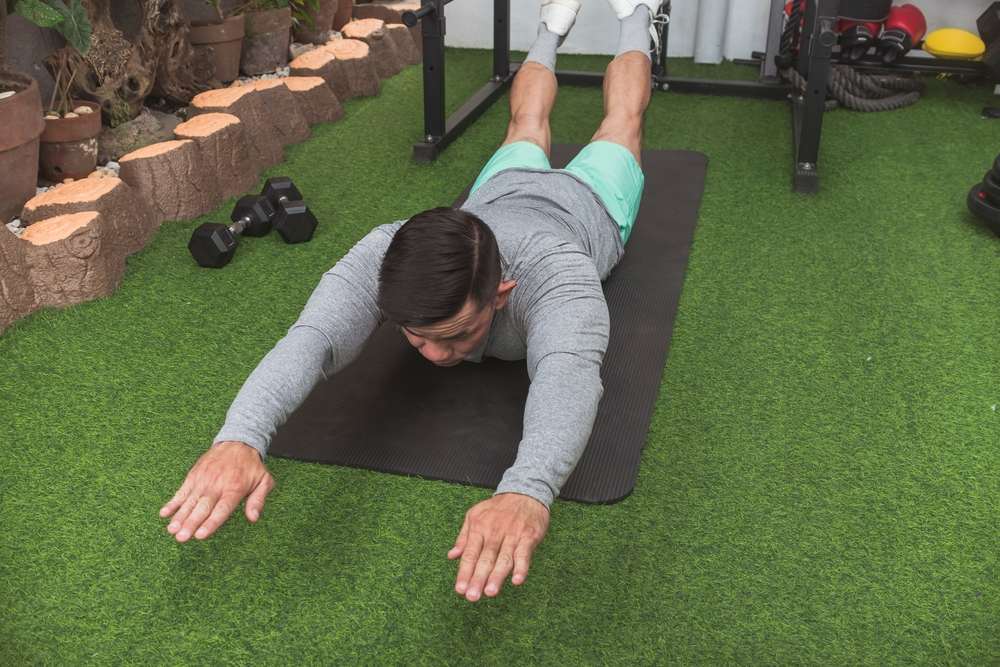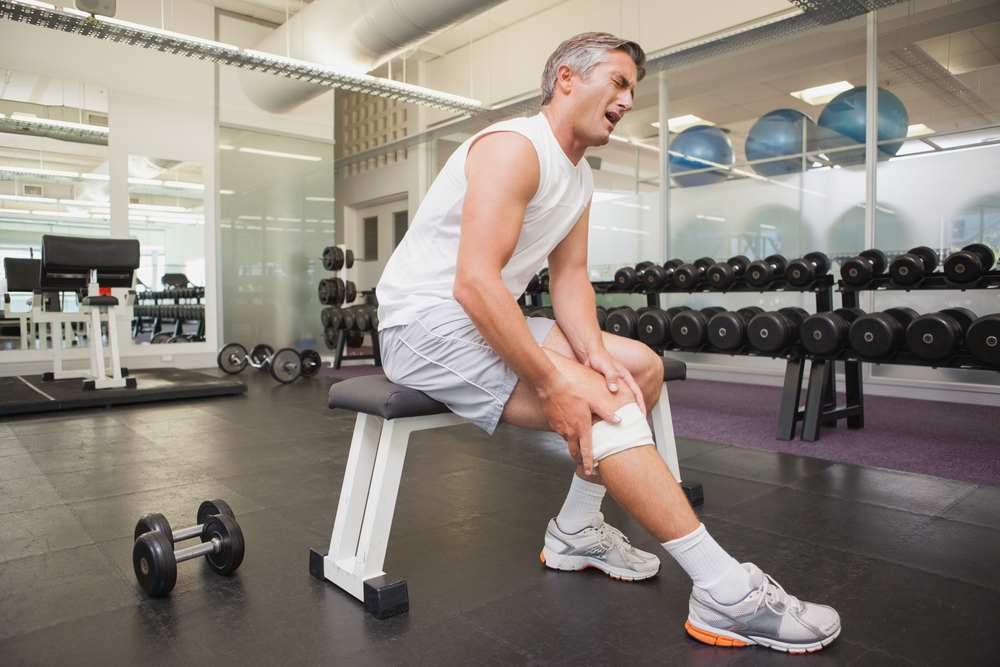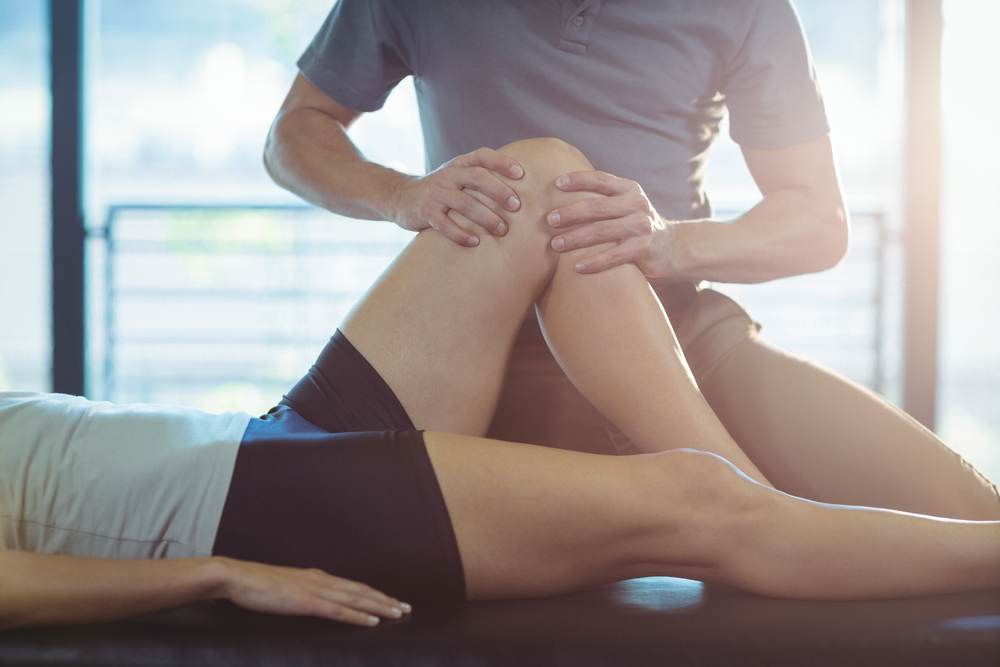 Exercise is an integral part of your overall health, but starting a routine and making it part of your daily or weekly routine can be hard. The Bureau of Labor Statistics released a 2019 report stating that 19.3 percent of the US population engaged in sports and exercise daily.
Exercise is an integral part of your overall health, but starting a routine and making it part of your daily or weekly routine can be hard. The Bureau of Labor Statistics released a 2019 report stating that 19.3 percent of the US population engaged in sports and exercise daily.
If you are used to regular exercise, frustration often increases if you become injured and have to ease into a new routine. To help prevent exercise-related injuries, it is important to build up to regular workouts slowly.
A 2017 report by the Sports & Fitness Industry Association estimates approximately 47 million people walked or jogged as their main source of exercise. This number has declined slightly since 2020 with the rise of the COVID-19 pandemic due to gym and fitness center closures.
Top 10 Tips to Ease Back Into Exercise
Start a New Routine Slowly
The main risk of injury occurs when exercising too fast or beyond your body’s limits. Be careful not to move up intensity levels in your workout without allowing your body to build up appropriate muscle and strength, for example, running before you walk or jog.
Consult your doctor when starting out a new exercise routine. This is especially important if you are newly recovered or still recovering from an injury. AICA Orthopedics can advise you on the best path to take when beginning to exercise post-injury.
Be Realistic with Your Goals
In the same school of thought, you should set realistic goals for your exercise program. Understand that going from a relatively inactive lifestyle, regardless if you exercised routinely in the past, to moving your joints and muscles requires building up a tolerance.
Example: Start with walking 5-10 minutes a day. Walking is shown to improve heart health, muscle tone, and joint stability. Increase your timing by 5-10 minutes every couple of days. BC Medical Journal reports that participants getting even half of the weekly recommended 150 minutes of exercise saw improvements in heart health.
With exercise, benefits are often internal and hard to visualize, so start slow- it is helping more than you think.
Choose Appropriate Shoes and Setting
Ensure you are wearing good shoes that are appropriate for your workout. Shoes support your feet, ankles, and knees, and that support flows up the entire body to ensure stability and limit injuries.
Your surroundings are part of your exercise gear. If you aren’t used to running on the pavement, it might be easier to start on grass or on a track with rubber turf.
Working out in a gym with staff to show you how to properly use equipment will lessen the risk of injury more than if you exercise at home. Once you are confident with machines or weights, it can be more comfortable and convenient to exercise from home.
Make Sure You Stretch
Establishing stretching into your routine is a key step in working out. Whether you have been exercising consistently or are coming back after a period of time, stretching is essential.
Without stretching, muscles stiffen and even shorten. If you jump right into a workout without stretching, you increase your likelihood of injury. Stretching increases blood flow to your muscles, promotes optimal healing, and helps prevent soreness after a workout. Flexibility helps with ease of movement and is essential to moving safely every day and while exercising.
Listen to Your Body
If a joint or muscle begins to hurt while exercising, stop and rest. Exercise should not hurt; if the pain persists after rest, seek a doctor’s evaluation. If you aren’t sure what is going on, AICA Orthopedics can evaluate you and discuss the best course of treatment. A higher risk of injury occurs when you try to push through pain or intense discomfort.
Pay Attention to Recovery Time
Cooldowns and rest days are just as important as stretching before a workout. Over-exercising can impact muscle and joint health, which can cause increased pain and long-term injury. When planning your weekly exercise, don’t schedule two high-intensity days back to back. In fact, it’s best not to work out multiple days in a row- especially if you are just easing in.
Regardless of your routine, exercise causes micro-injuries to tissues. Rest days allow the body to repair those injuries – usually fibroblasts, which are cells that repair muscle proteins – allowing the new limits of the muscles, tendons, and ligaments you focused on during a workout to settle.
Recognize the Importance of Nutrition and Hydration
In order to keep facilitating safe exercise, it is important to eat the right food at the right time. Eating immediately before running or doing a high-intensity workout can lead to stomach cramping and nausea. Some people find it more comfortable to exercise before eating a full meal, while others need to eat beforehand.
When you start exercising again, you must increase your water intake. Being adequately hydrated for a more sedentary lifestyle is not enough to keep up with the moisture you lose while sweating. Staying hydrated is important for muscle recovery, balance, sodium levels, and safety.
Maintain a Balance of Workouts
Variety in your exercise routine can help in a myriad of ways. Switching from cardio to high intensity to weight training to something like yoga not only helps keep exercise from being boring, it actually helps with flexibility and balance.
Our orthopedic doctors recommend a balance of high-impact versus low-impact workouts. The balance allows other parts of your body to rest and recover while still exercising. This will help with joint health and prevent excessive soreness of muscles.
In line with varying your routine, you can also find a workout buddy. Someone to talk with, spot your weights, and make your workout even more enjoyable.
Consider Journaling
Keeping track of multiple aspects of your exercise journey can help you hone in on an ideal routine. Make note of what foods help your muscles recover, what time of day you enjoy exercise the most, and more specific statistics such as pace/time.
Notate what exercise you like the most- if you do things you like, you are more likely to build a habit. Do you have a favorite gym or park to run at?
A journal is also a great way to track progress, especially if you are recovering from an injury and want to track how you improve every week and plan how to continue your exercise plan.
Do It for You
Don’t exercise because someone shames you for it or because you feel it’s an obligation. Building habits starts with enthusiasm and commitment. You are more likely to stick with an exercise routine if you enjoy what you are doing!
Exercise-Related Injuries
 Without proper technique, prep, and care, you can easily injure yourself while exercising. Common types of exercise-related injuries include injuries to the shoulders, knees, and low back. Frequently seen injuries by orthopedic physicians at AICA Tucker include:
Without proper technique, prep, and care, you can easily injure yourself while exercising. Common types of exercise-related injuries include injuries to the shoulders, knees, and low back. Frequently seen injuries by orthopedic physicians at AICA Tucker include:
- Torn rotator cuff
- Shin splints
- Stress fracture
- Herniated disc
- Muscle strain
- Torn/damaged meniscus
These injuries have several causes, but most can be prevented with appropriate technique, aftercare, and choosing an appropriate volume of exercise.
- Lifting too much weight
- Improper posture while lifting, running, and even walking
- Lack of appropriate shoes
- Not stretching or cooling down
- Exercising too frequently
Supportive Options
If you believe you have sustained an injury related to over-exercise or exercising more than your body was ready for, please seek prompt evaluation and treatment. Early treatment helps speed healing and prevent the worsening of an injury.
What to Do if You Sustain an Injury
Immediately following an injury, you should stop, evaluate, and treat supportively until you can see an orthopedic doctor.
At-Home Steps Can Include:
- Rest
- Elevate swollen joints
- Ice sore muscles
- Non-steroidal anti-inflammatory (NSAID) medications
Treatments at AICA Orthopedics
Physician Evaluation
At AICA Orthopedics, we can evaluate any potential injury. This will include a physical exam and a discussion with a physician.
Diagnostic Imaging
Testing such as x-rays and MRIs to accurately diagnose a potential injury can be performed in our offices. Imaging is the best way to allow us to develop a comprehensive recovery plan.
Physical Therapy and Physiotherapy
You might need physical therapy to help ease pain or tension in joints and muscles. Our physical therapists can teach you the best ways to move your body to facilitate healing and future success while exercising.
Chiropractic Care
Our chiropractors can help with pain management and stiffness that are a result of injury.
Contact AICA for Help
 At AICA Tucker, treating injuries as a result of exercise or sports is one of our specialties. We will provide any care needed to help rehabilitate your body and get you back to your favorite exercise routines. AICA is staffed 24/7 and offers same-day appointments to evaluate injuries and begin treatment regardless of the cause. To promote optimal healing, contact AICA Tucker to develop a plan and schedule an evaluation at one of our many Atlanta area locations.
At AICA Tucker, treating injuries as a result of exercise or sports is one of our specialties. We will provide any care needed to help rehabilitate your body and get you back to your favorite exercise routines. AICA is staffed 24/7 and offers same-day appointments to evaluate injuries and begin treatment regardless of the cause. To promote optimal healing, contact AICA Tucker to develop a plan and schedule an evaluation at one of our many Atlanta area locations.
